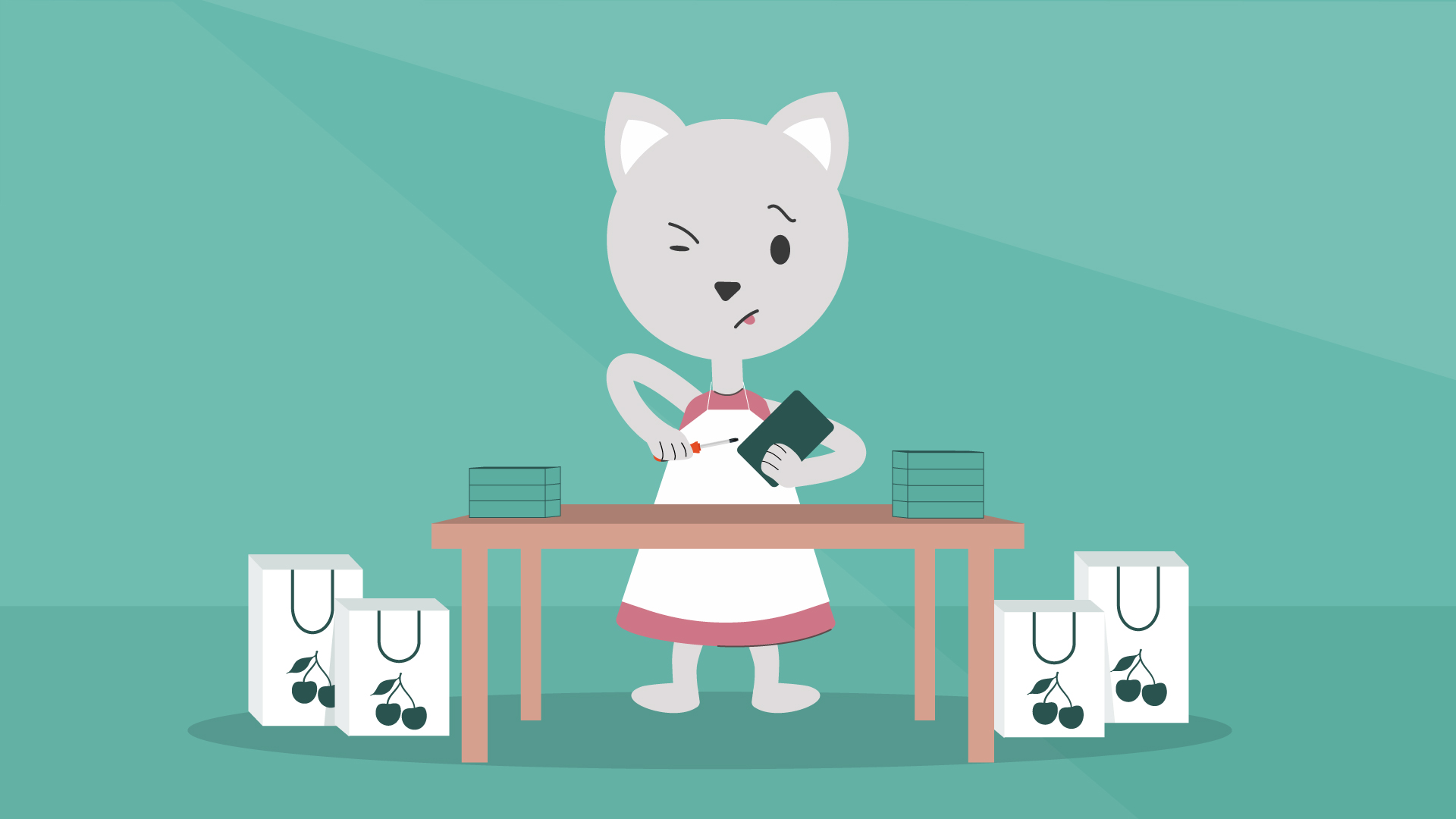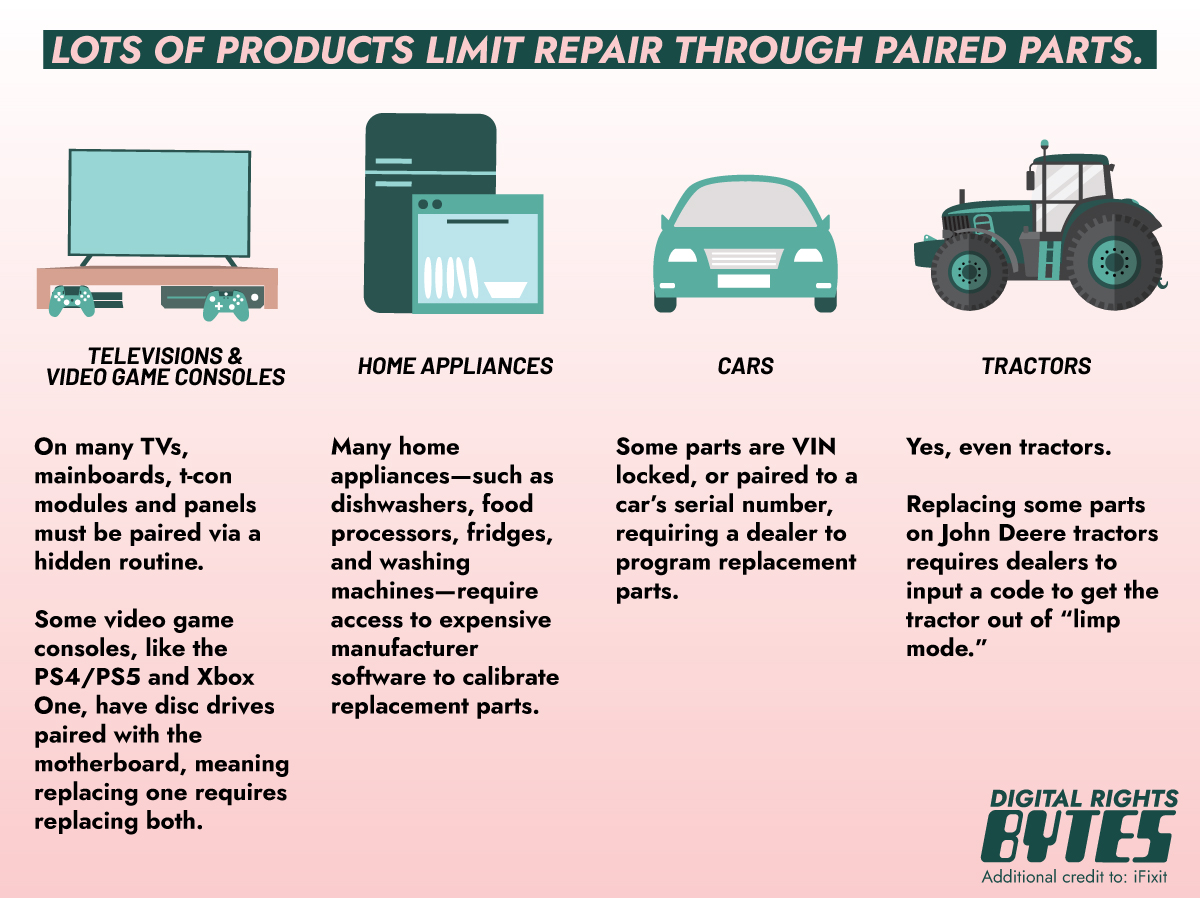Why is it so expensive to repair my devices?
You've dropped your phone and the screen shattered. Now you're facing a costly repair until you can get a new phone. Swapping out one piece of glass or a button doesn't seem like it should be that expensive. Why does it cost so much to fix your stuff?
Here's how it works
Put simply, repair is its own money-making business. Of course, parts and labor to fix things costs money, but manufacturers like Apple or Samsung see repair as a way to pad their profits even further. So, they control who has access to their repair materials and manuals and set the prices for parts. This lets them limit repairs to "authorized" shops, who pay money to be in the company's network and prevents individuals from fixing their own devices or finding other repair shops that charge less.

Product manufacturers have chipped away at the very idea of ownership by using the growing presence of software to argue that if you tinker with the things you own, it violates their copyright. Some manufacturers have said it’s illegal to even look at how the software works. It’s gotten so bad that there’s a booming market for 40-year-old tractors that don’t rely on software.
Companies claim their actions are good for customers, because going to an independent repair shop is more likely to hurt your product's security. The U.S. government has debunked this argument, and so have independent experts at an organization called SecuRepairs. But this messaging often scares people and convinces customers to go to "official" repairers every time. The costs of parts and labor under this controlled repair system can drive prices up so much that many people opt to buy a new device rather than fix their old one.

Once you get to a repairer, companies have more tricks to drive up the price of repairs:
- One tactic is to only sell parts in bundles, rather than individually. This is known as "parts pairing." For example, you may only need a new screen, but they may charge you for an entire "display assembly" because the manufacturer only supplies the screen as part of a set.
- Parts pairing also makes it harder to get some replacement parts because you can’t use spare parts from one device to fix another. When a part changes, some devices detect it as "unauthorized," and can restrict your ability to use the spare part.
Why this needs to change
This problem is spreading. These practices aren't limited to gadgets like smartphones and laptops. Software is in our cars, our appliances, our door locks, and an ever-growing list of other places, and that means the repairability of these devices suffers as manufacturers resort to anti-repair tactics to squeeze more money out of their customers. Software is subject to copyright, and that means that, as a rule, you might own your device, but you only license the software in it. And that license is likely to come with restrictions on your ability to tinker with your stuff.
In the future, you may not be able to pop the hood and fix a car anymore. You'll have to take it to the dealership or an independent repair person who has paid the manufacturer’s ransom for repair information and parts. Or, if your tractor breaks down, you may have to wait until the "authorized" repair technician gets out your way, rather than ask your neighborhood mechanic to lend a hand.
Manufacturers want to limit who can fix problems because they can make a lot of extra money off it. This means less convenience, higher prices, and using half-broken devices while we wait or save up for a repair.
What you can do
Learn What Devices are Repairable
If there's a simple repair that you can make, such as swapping out a cracked key on your laptop keyboard, consider making that fix yourself. Significant repairs may void your warranty, but you'll also be able to keep your device for longer, keep it out of a landfill for longer, and likely save money.
When it is time for a new device, you can try to buy stuff designed to be repaired. Look for product reviews that talk about repairability, and consider that in your choices.
- Visit iFixit's repository of "repair guides for every thing."
- Learn how different devices rank for repairability.

Read up on the Right to Repair
The California Public Interest Research Group estimates that repairing electronics could save an average family approximately $382 per year—a total of $49.6 billion annually.
And it’s bad for the environment: the average American family generates about 115 pounds of electronic waste each year—6.9 million tons nationally.
But it’s great for the manufacturers’ profit margins.
- Repair saves families big.
- People want to get phones and appliances fixed—but often, they can’t.
- Nixing the Fix: An FTC Report to Congress on Repair Restrictions.
- California takes some big steps for digital rights.
- The right to repair is law in Minnesota.
Tell Your Representatives
On a larger scale, you can support "right to repair" legislation that requires manufacturers to make parts and materials available and stops practices like parts pairing. About a dozen states, including California, Colorado, Minnesota, Oregon, and Massachusetts have passed laws guaranteeing the right to repair. Almost every other state has a right-to-repair bill pending as of 2024, so you can write to your local representative. We expect a federal right-to-repair bill to be introduced in the near future.
EFF has your back
We at the Electronic Frontier Foundation work to defend your right to own what you buy. Our activists have fought to get legislation for “right to repair” in many states. Right to repair is the notion that once you buy something – a car, a DVD, a printer – you should be able to tinker with it, fix it, or bring it to someone else who can. Our lawyers have weighed in on cases that have moved through the courts. And our technologists work to make sense of all of these devices and their problems, as well as how you can use them to your own benefit, rather than the benefit of the manufacturer.